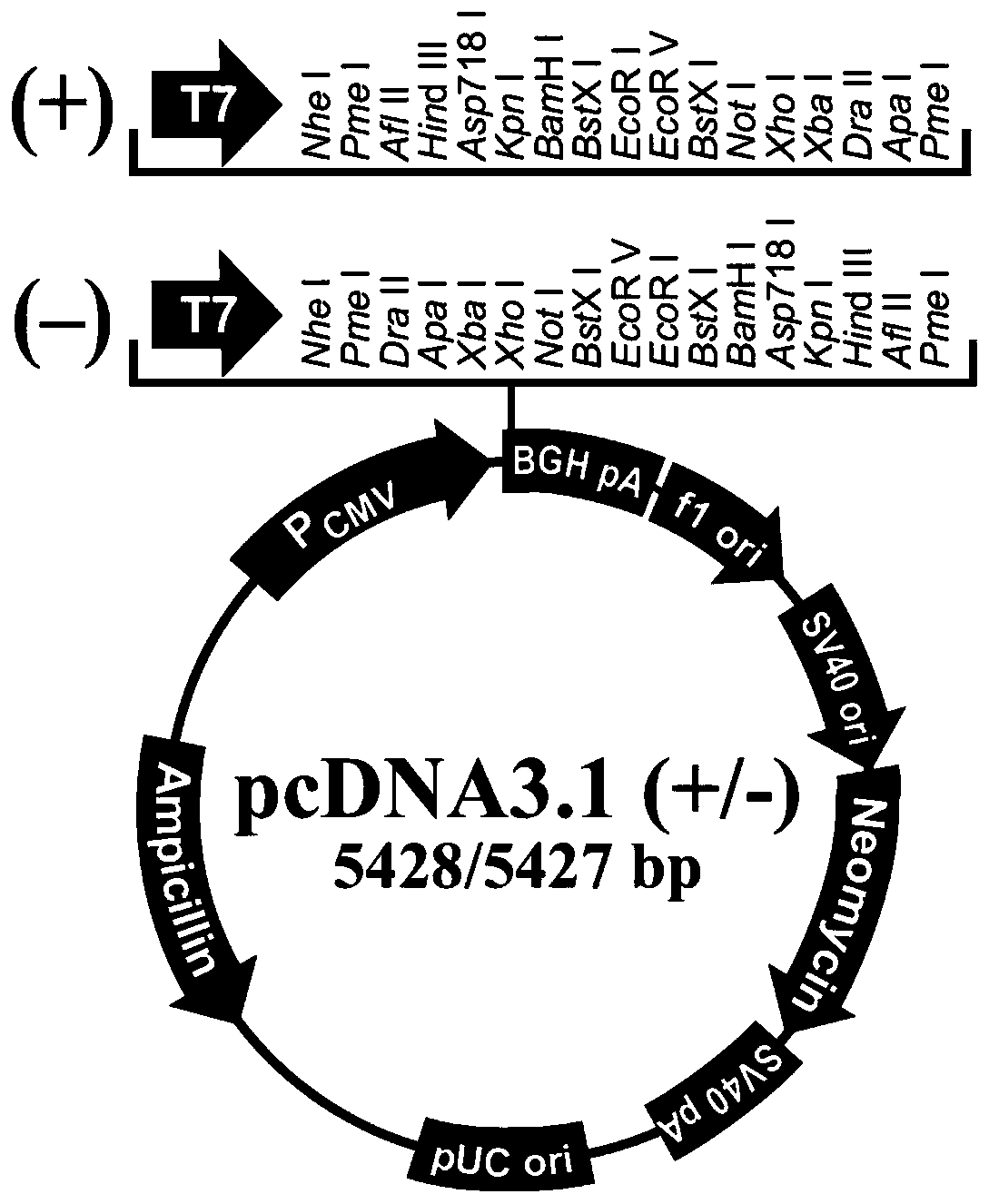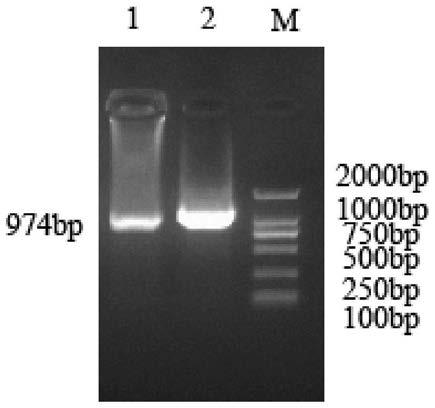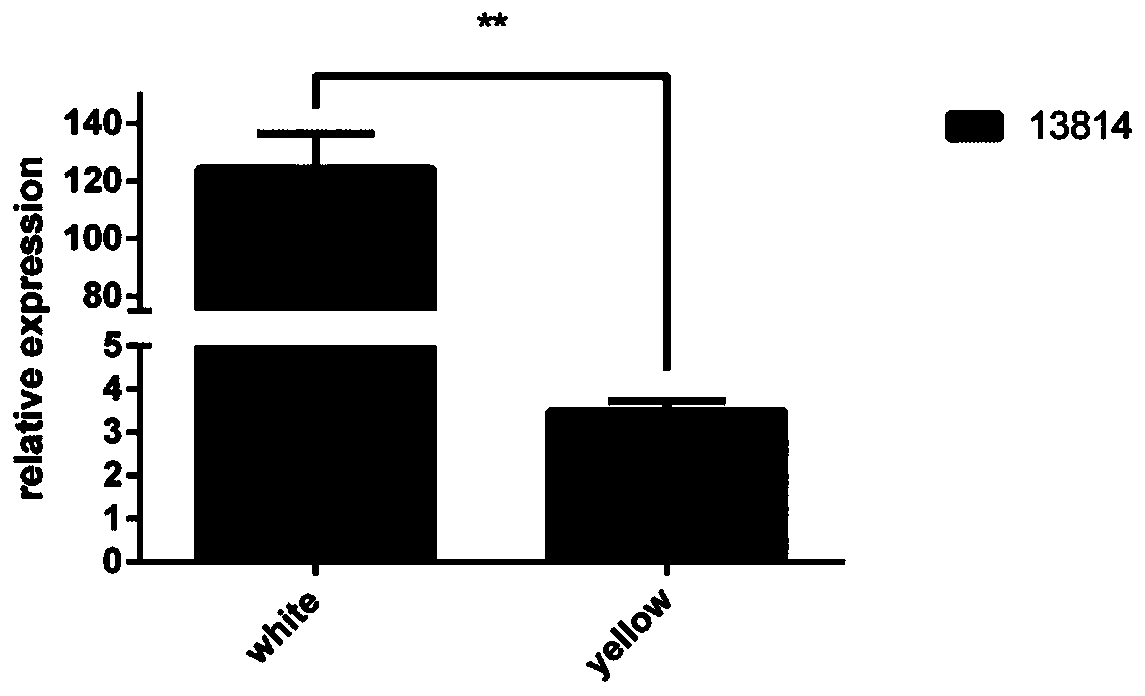Long-chain RNA Lnc-13814 for regulating and controlling follicle development of laying ducks and application thereof
A technology of rnalnc-13814 and follicle development, applied in the field of genetic engineering, to achieve the effect of improving the fecundity of laying ducks
- Summary
- Abstract
- Description
- Claims
- Application Information
AI Technical Summary
Problems solved by technology
Method used
Image
Examples
Embodiment 1
[0036] 1. Laying duck long-chain RNA Lnc-13814 gene
[0037] The cDNA sequence corresponding to the laying duck long-chain RNA Lnc-13814 described in this example is shown in SEQ ID NO: 1. The laying duck long-chain RNA Lnc-13814 of the present invention is based on the full transcription of the laying duck follicle tissue completed by the applicant in the previous stage. Group sequencing results, a new LncRNA molecule obtained through a large number of bioinformatics analysis and screening of the sequencing results of two groups of follicular tissue samples at different developmental stages. The applicant named it the laying duck long-chain RNA Lnc-13814, and the length of the cDNA sequence corresponding to the laying duck long-chain RNA Lnc-13814 is 974bp.
[0038] 2. Preparation of the full-length sequence fragment of the long-chain RNA Lnc-13814 gene of laying ducks
[0039] 1. Sample collection
[0040] Collect 3 samples of egg-laying duck white follicles and 3 samples ...
Embodiment 2
[0071] Example 2 Fluorescent quantitative detection kit and method for laying duck long-chain RNA Lnc-13814 gene
[0072] In this example, a pair of fluorescent quantitative PCR detection primers was designed to identify and identify the objective presence of the laying duck long-chain RNALnc-13814 described in Example 1 in the laying duck follicular granulosa cells. The identification method of this embodiment includes the following steps:
[0073] 1. Sample collection
[0074] Collect 3 samples of egg-laying duck white follicles and 3 samples of yellow follicles during the peak laying period. After cleaning with PBS, puncture the follicles with a needle to squeeze out the follicle fluid, put them into an enzyme-free 1.5mL EP tube, mark them and put them into liquid nitrogen or Store in -80°C refrigerator.
[0075] 2. Extraction of total RNA from samples
[0076] Utilize traditional TRIzol, chloroform method to extract follicle tissue total RNA, specific steps are the same...
Embodiment 3
[0089] Example 3 Effect of long-chain RNA Lnc-13814 gene overexpression on apoptosis of laying duck follicular granulosa cells
[0090] 1. Construction of long-chain RNA Lnc-13814 gene overexpression vector in laying ducks
[0091] This embodiment provides an overexpression vector of the laying duck long-chain RNA Lnc-13814 gene, and the vector includes the cDNA sequence corresponding to the laying duck long-chain RNA Lnc-13814. Vector construction specifically includes the following steps:
[0092]1. Double digestion treatment of pcDNA3.1(+) vector
[0093] Schematic diagram of the structure of the pcDNA3.1(+) vector figure 1 As shown, the vector contains restriction endonucleases KpnI and XhoI cutting sites. The above vector was double-digested with two endonucleases KpnI and XhoI. The enzyme digestion reaction system was as follows, and the total volume of the system was 50 μL:
[0094] Table 4
[0095]
[0096] The reaction conditions are: enzyme digestion at 37°C ...
PUM
 Login to View More
Login to View More Abstract
Description
Claims
Application Information
 Login to View More
Login to View More - R&D
- Intellectual Property
- Life Sciences
- Materials
- Tech Scout
- Unparalleled Data Quality
- Higher Quality Content
- 60% Fewer Hallucinations
Browse by: Latest US Patents, China's latest patents, Technical Efficacy Thesaurus, Application Domain, Technology Topic, Popular Technical Reports.
© 2025 PatSnap. All rights reserved.Legal|Privacy policy|Modern Slavery Act Transparency Statement|Sitemap|About US| Contact US: help@patsnap.com



